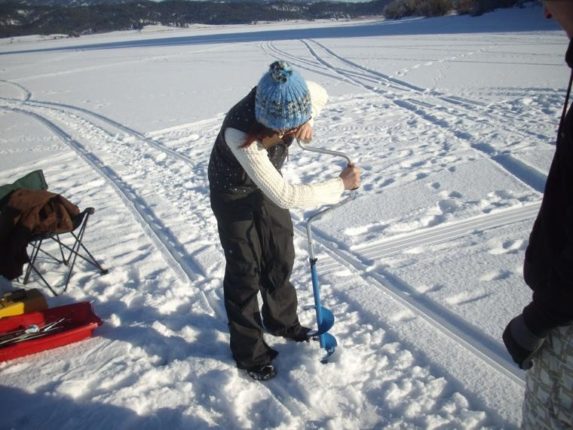Contrary to what some people think, all firearm owners are not of the same mind when it comes to shooting and hunting. Many firearm owners don’t hunt and the reasons they don’t are almost as varied as the people who own and shoot firearms, and do hunt. Some have firearms for self defense because of a perceived rise in violent crime including assault and the increased awareness of home burglaries. That also seems to be the reason that firearm ownership is increasing in Europe and the United Kingdom.
Some people really enjoy target shooting and socializing with other target shooters at the shooting range, while some people enjoy collecting firearms, but rarely shoot those firearms.
Texas A&M University where I taught for 25 years has one of the most impressive gun collections in the United States. The collection includes MatchIocks, Flintlocks, Percussion rifles and pistols as well as more modern firearms that use smokeless powder ammunition. One of my favorite rifles in that collection is an old, black-powder, four-bore elephant gun. I’m just amazed anyone would carry a rifle that big and heavy across Africa hunting the “Big Five,” for which Africa is famous. I suspect that because that rifle had to be reloaded with powder, patch and ball as well as putting powder in the pan, between shots, the hunter got trounced by one of the Big Five as often as the first shot ended the hunt.
Those of us that hunt in North America are also a varied group in what we like to hunt, the calibers we use and our particular hunting ethics. I think most of us agree on a basic list of ethical hunting practices, but some of us are trophy hunters and won’t shoot unless the game fits our requirements of antler points, general size and whatever else we think is important.
We also don’t all use the same caliber of rifle or the same type of bullet for deer, elk, moose, pronghorn and other game. For example, I hunt coyotes with a 55- to 63-grain bullet in .223/5.56 caliber, deer with a .30-30 Winchester lever action, .30-06, or a .300 Weatherby Magnum in bolt action depending on terrain, tree and brush cover, and distance at which I might have to shoot. I usually load the .30-30 with Hornady 160-grain LEVERevelution ammunition, and 180-grain bullets in both the .30-06 Springfield and the .300 Weatherby.
When choosing ammunition for the .30-06, I generally use Remington Core-Lokt ammunition. I load my own 180-grain bullets in front of 80 grains of Reloader 22, for my .300 Weatherby or I use Weatherby’s 180-grain Spire Point bullets.
I am a little old school, and don’t trust polymer tips on bullets to not start deforming from the heat generated by the magnum calibers with muzzle velocities over 3000 feet per second. However, there are many hunters who will gladly sing the praises of polymer tip bullets such as the “Ballistic Tip” bullets in the Weatherby line of ammunition and Hornady’s polymer tips.
We don’t all agree on the best caliber and bullet weight for the game we hunt either. Jose Sarber, a game warden out of Saint Petersburg, Alaska, never used anything bigger that a .30-6 on Alaska brown bear. His favorite bear load was the now obsolete 172 grain Western Tool and Copper Company open-point bullet with enough powder behind it to move it along at 2,750 to 2,800 feet per second. Jack O’ Conner, a well known hunting writer also liked the .30- 06 for the Alaskan Brownies, but opted for 180- and 220-grain bullets for the big bears.
Today many hunters have decided that the .270 Winchester and the .30-06 just aren’t up to really large North American game, even though they were most hunter’s favorite big-game calibers until the late 1950s when the big-bore magnum rooting section started trying to convince us that the 30-caliber magnums and up were the only calibers a real man or woman would use on anything over 700 pounds.
Some of us talk back to the magnum crowd, reminding them that it doesn’t matter how big a cannon one uses, if you can’t place the shot in the vitals, the big stuff won’t go down. If you can place the shot in the vitals, .270s and .30-06s do a really good job at the distance they were designed for. I didn’t purchase a .300 Weatherby as much for the particular type of game I hunt, as for the distance I think I will have to shoot whatever I am hunting.
I and one other of the guys I hunt with carry single-action pistols in .45 Colt and .357 mag. The rest carry their rifle and no side arm.
I am an ambush hunter. I like to get up early and get settled in a spot overlooking a game trail where I have seen game while scouting the area before the season opens. Most of the others in our group can’t sit anywhere more than five minutes and like to move quietly through the area using the tree line or any cover they can find. I probably cover close to the same amount ground they do by starting out early to reach the spot where I want to be, but once I’m there I don’t move very much. I’ve even had hunters who are moving around, spook game right into my area.
So we have our differences, but we all enjoy hunting, shooting and gun collecting on our own terms.
Smokey Merkley was raised in Idaho and has been hunting since he was 10 years old. He can be contacted at mokeydo41245@hotmail.com.
